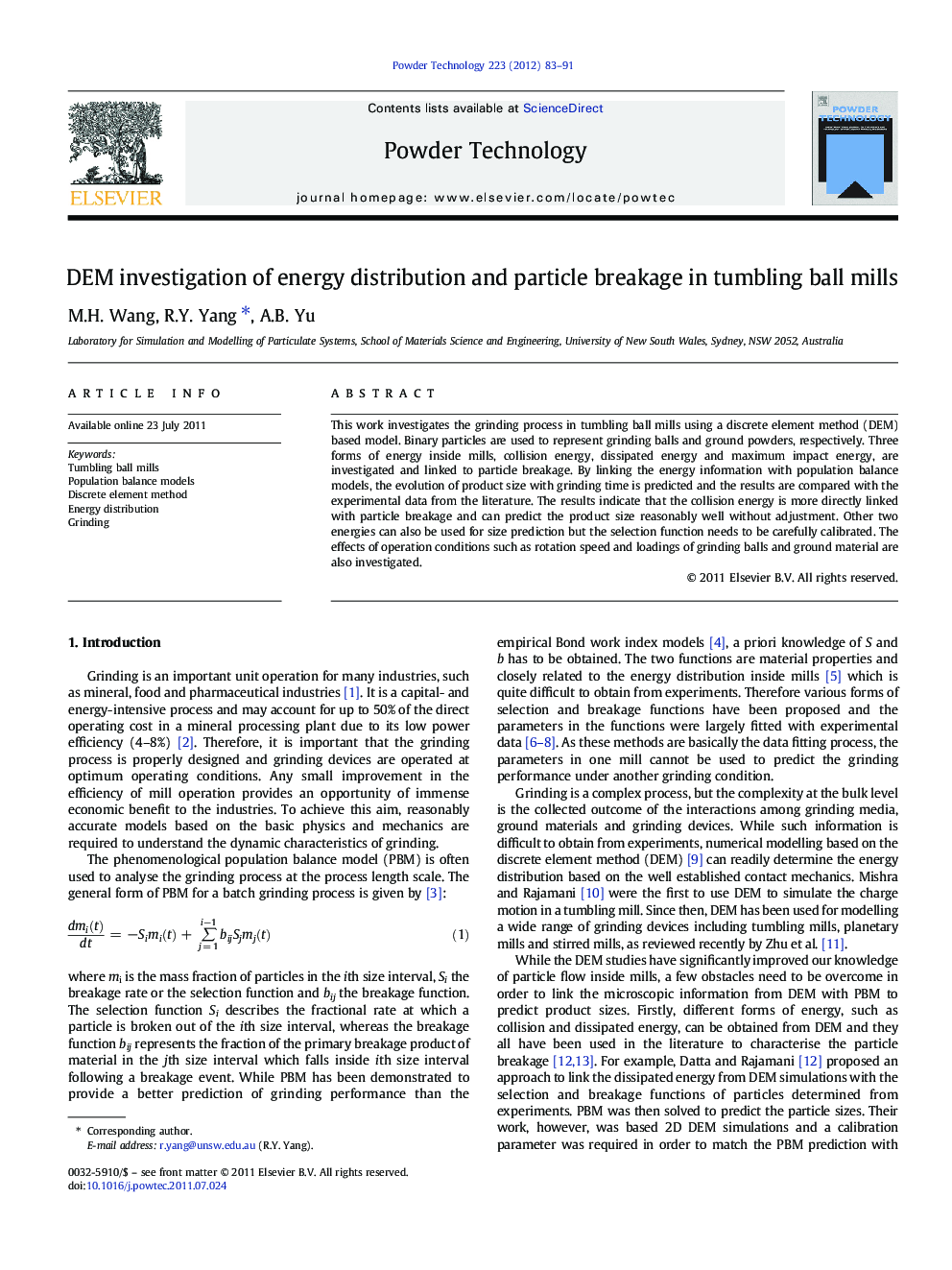| Article ID | Journal | Published Year | Pages | File Type |
|---|---|---|---|---|
| 237276 | Powder Technology | 2012 | 9 Pages |
This work investigates the grinding process in tumbling ball mills using a discrete element method (DEM) based model. Binary particles are used to represent grinding balls and ground powders, respectively. Three forms of energy inside mills, collision energy, dissipated energy and maximum impact energy, are investigated and linked to particle breakage. By linking the energy information with population balance models, the evolution of product size with grinding time is predicted and the results are compared with the experimental data from the literature. The results indicate that the collision energy is more directly linked with particle breakage and can predict the product size reasonably well without adjustment. Other two energies can also be used for size prediction but the selection function needs to be carefully calibrated. The effects of operation conditions such as rotation speed and loadings of grinding balls and ground material are also investigated.
Graphical abstractFigure optionsDownload full-size imageDownload as PowerPoint slide
